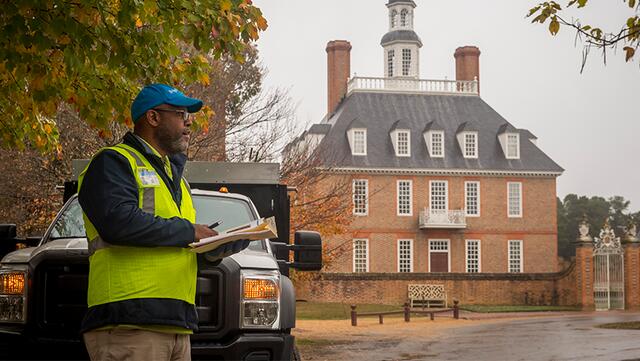
Don’t Believe These 5 Tree Care Myths
Not Every Tip is Rooted in Fact
Don’t believe everything you hear, especially when it comes to tree care. Myths and legends abound, some of which can permanently harm your trees. That’s why we’re breaking down five of the most common misconceptions and delivering the facts you need to treat your trees right.

(Psst: find hints in the article below!)
Myth No. 1: All Trees Need Stakes
Let’s first clarify when stakes are definitely needed: Specifically, if you’re in a windy area, the tree is top heavy, or is otherwise at a high risk of leaning due to loose soil or a small root system.
Otherwise, your tree may be just fine without a stake. In many cases, stakes are forgotten once they’re placed and that could post a problem down the line, especially if it causes girdling as the tree continues to grow. Another potential issue unnecessary or improper staking can cause is impeding natural sway for the trunk. This helps trunks grow stronger and promotes more robust root growth.
Myth No. 2: Trees Don’t Need Any Special T.L.C.
Because, hello, haven’t you seen a forest? We get it— if trees do just fine in the wild, it would stand to reason they don’t need any help from us. But the urban environment is much different and has its own unique set of stressors, like limited space, soil compaction, and pollutants. Regular pruning, fertilizer, and ongoing care from a certified arborist—such as a plant health care program—help trees excel in spite of the manmade challenges we throw their way.
Myth No. 3: Build-Up Mulch Around the Trunk
The “mulch volcano” has become such a ubiquitous sight that it’s probably hard to believe it’s not what you’re supposed to do. The truth is excess mulch piled around the base of a tree can suffocate tree roots or cause decay. Worse, trees may try to grow a secondary root system into the mulch pile, which will eventually be exposed as the mulch decays. Yikes!
To be sure, mulch has its benefits. It regulates soil temperature, helps preserve soil moisture, and prevents weeds. But like all good things, moderation is key.
Myth No. 4: Most Tree Roots are Deep Underground
Actually, the majority of tree roots are located in the uppermost 12 to 36 inches of the soil. Some trees may develop deeper anchoring roots, such as oaks and hickories, but most never do. You might also be surprised to learn that contrary to popular belief, a tree’s root system does not end at its drip line; in fact, many root systems extend more than twice the diameter of the tree’s canopy.
Given the area and shallow depth, tree roots can easily be damaged by our daily activities—either directly, by tools and equipment, or over time through soil compaction. That’s why it’s so important to take extra care when digging or operating machinery in the vicinity of your trees.
Myth No. 5: Topping a Tree is Beneficial
First, let’s establish that tree pruning is not the same as topping. Topping is a practice where, just as the name suggests, you remove the top of the tree. Upper branches are essentially reduced to stubs. The result is both unsightly and terrible for the tree. In addition to making the tree more susceptible to disease and pests, it also permanently impairs the tree’s ability to maintain a natural shape. And here’s the kicker: it inevitably induces the need for more pruning. That’s because after being topped, a tree will respond to the stress by sending out tons of water sprouts. These fast-growing shoots are a defense mechanism to help replace the critical foliage that was lost. Unfortunately, their dense growth pattern and spindly shape are less-than attractive.
Arborists agree tree topping is a no-go. If you need to manage a tree’s size, there are a number of better alternatives. A certified arborist can guide you to the best solution.
Looking for a certified arborist and experienced tree care team? Look no further! With our knowledgeable local experts, your trees are in good hands. Get in touch to set up a complimentary consultation.




